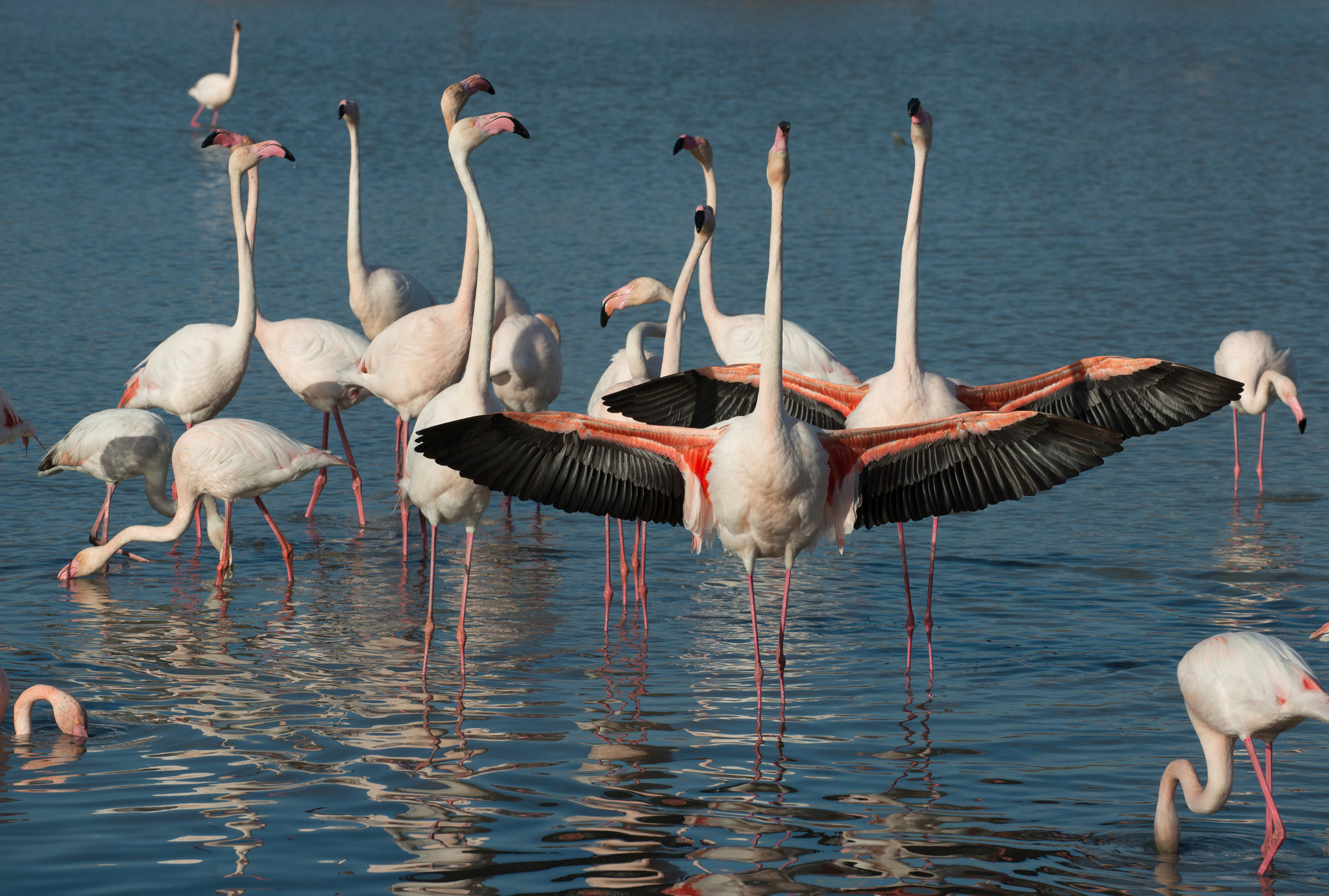
Flamingos!
Flamingos are very good dancers. They twist and preen, they scratch their heads, they march in unison. They poke a wing in one direction and a leg in another. They bend forward, sticking their tails up; they vigorously flap their wings in a flashy red and black display. Flamingos are serially monogamous. They mate for one year, get divorced, and find a new mate the next year. New mates are mutually agreed upon — males and females both dance in search of a compatible partner. Now researchers have discovered that birds with the largest repertoire of dance moves, and the ability to switch quickly and often from one move to another, are the ones who most often succeed in finding mates. Scientists carefully watched and photographed 50 male and 50 female birds during the mating season in the Camargue, in southern France, recording the type, timing and frequency of their gyrations. The birds, all tagged since birth, ranged from 4 to 37 years old. During the average five-minute courtship sequence, the number of postures varied between two and eight, while the number of transitions between postures varied between two and 17. Combining the two numbers, the researchers created a “sexual display complexity” score for each bird. Then they tracked the dancers to see who succeeded in producing chicks. As the mating season progressed, all the flamingos improved their dancing with more varied moves and transitions, but both the youngest and the oldest birds received lower scores than the 20-year-olds. In the end, successful breeders averaged 61 in sexual display complexity, while those that remained single came in at 41. But pairs tended to have similar scores — good dancers preferred similarly skilled partners. But why? “Good motor function is necessary in reproduction,” said the lead author, Charlotte Perrot, a doctoral candidate at the University of Montpellier. “Breeding in a very dense colony where space is limited requires birds to be adroit, and foraging to feed a chick also requires good motor performance.”
This photo & article was written by Nicholas Bakalar & appeared in The New York Times, on November 29, 2016.
